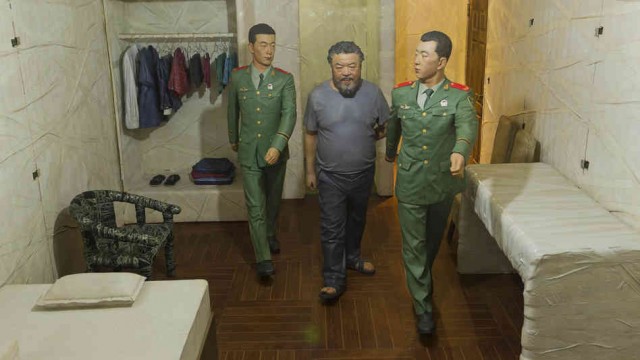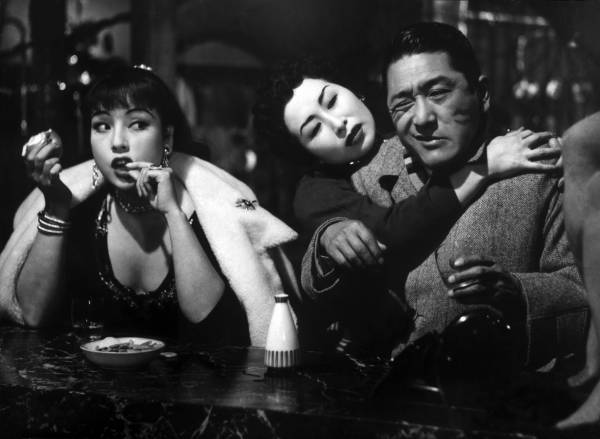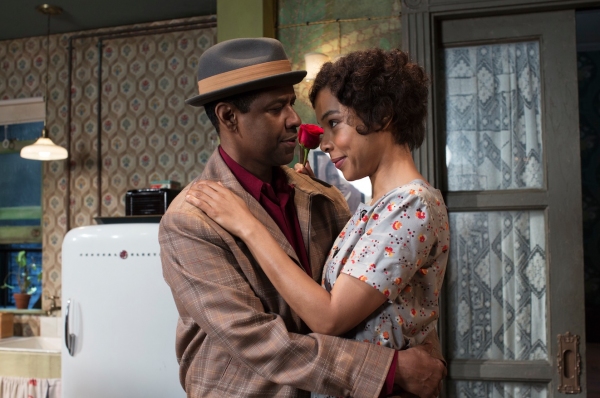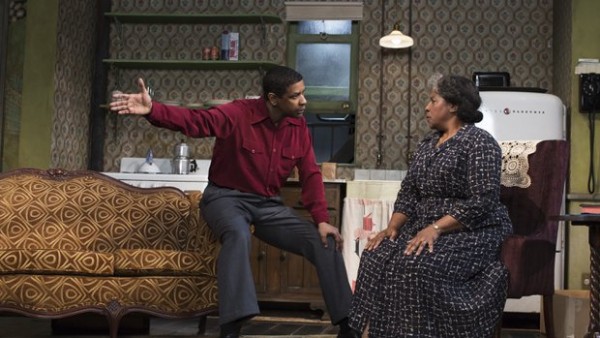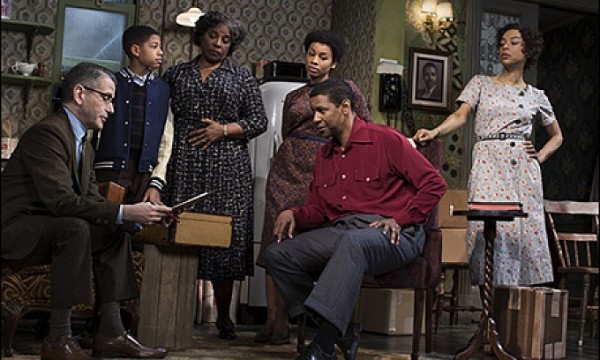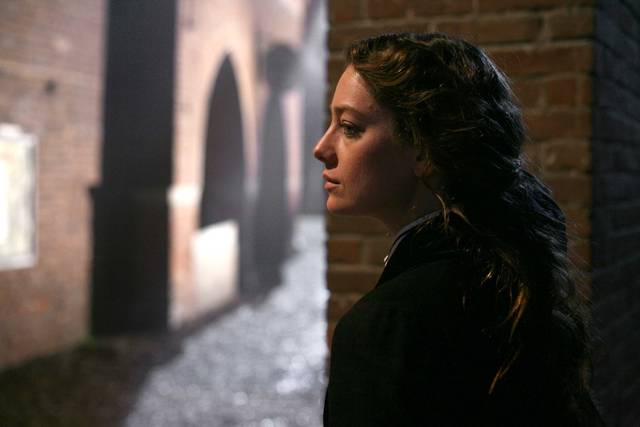
Giovanna Mezzogiorno was named Best Actress at the Chicago International Film Festival for her stirring performance in VINCERE
VINCERE (WIN) (Marco Bellocchio, 2009)
MoMA Film, Museum of Modern Art
11 West 53rd St. between Fifth & Sixth Aves.
Sunday, May 4, 2:30, and Wednesday, May 7, 4:00
Tickets: $12, in person only, may be applied to museum admission within thirty days, same-day screenings free with museum admission, available at Film and Media Desk beginning at 9:30 am
Series continues through May 7
212-708-9400
www.ifcfilms.com
www.moma.org
 In the historical romantic drama Vincere, Italian master filmmaker Marco Bellocchio delivers the little-known real-life story of Ida Alser (Giovanna Mezzogiorno), Benito Mussolini’s (Filippo Timi) first wife and the mother of Il Duce’s first-born son, Benito Albino (Fabrizio Costella). Alser and Mussolini first meet in Milan in 1907, when she is a fashion and beauty entrepreneur and he is a newspaper journalist championing a religion-free Socialist. They feel an immediate connection and have passionate meetings. Soon they have a child and are married. But as Mussolini’s power in the Fascist movement grows, he takes a more traditional wife (Michela Cescon) and has another child, disavowing any relationship with Ida and young Benito and going to any lengths to cover up their very existence. Set amid the swirling turmoil that pervaded Italy during the two World Wars, Vincere, featuring an epic score by Carlo Crivelli, is a beautifully shot melodrama (courtesy of cinematographer Daniele Ciprì), able to focus on two strong, unrelenting characters who know what they want – and what they don’t. Bellocchio interweaves archival newsreel footage, lending the film not only more reality but firmly placing it in historical context. Mezzogiorno is brilliant as Alser, a modern-day woman ahead of her time who fought for what she believed in and what she deserved, even if it meant going up against one of the most powerful men in the world. Vincere is screening on May 4 & 7 as part of MoMA’s Bellocchio retrospective, held in conjunction with the upcoming U.S. release of his latest film, Dormant Beauty, which opens June 6 at Lincoln Plaza. The series continues through May 7 with such other Bellocchio works as The Conviction, Vacation in Val Trebbia, A Leap in the Dark, and Dormant Beauty.
In the historical romantic drama Vincere, Italian master filmmaker Marco Bellocchio delivers the little-known real-life story of Ida Alser (Giovanna Mezzogiorno), Benito Mussolini’s (Filippo Timi) first wife and the mother of Il Duce’s first-born son, Benito Albino (Fabrizio Costella). Alser and Mussolini first meet in Milan in 1907, when she is a fashion and beauty entrepreneur and he is a newspaper journalist championing a religion-free Socialist. They feel an immediate connection and have passionate meetings. Soon they have a child and are married. But as Mussolini’s power in the Fascist movement grows, he takes a more traditional wife (Michela Cescon) and has another child, disavowing any relationship with Ida and young Benito and going to any lengths to cover up their very existence. Set amid the swirling turmoil that pervaded Italy during the two World Wars, Vincere, featuring an epic score by Carlo Crivelli, is a beautifully shot melodrama (courtesy of cinematographer Daniele Ciprì), able to focus on two strong, unrelenting characters who know what they want – and what they don’t. Bellocchio interweaves archival newsreel footage, lending the film not only more reality but firmly placing it in historical context. Mezzogiorno is brilliant as Alser, a modern-day woman ahead of her time who fought for what she believed in and what she deserved, even if it meant going up against one of the most powerful men in the world. Vincere is screening on May 4 & 7 as part of MoMA’s Bellocchio retrospective, held in conjunction with the upcoming U.S. release of his latest film, Dormant Beauty, which opens June 6 at Lincoln Plaza. The series continues through May 7 with such other Bellocchio works as The Conviction, Vacation in Val Trebbia, A Leap in the Dark, and Dormant Beauty.
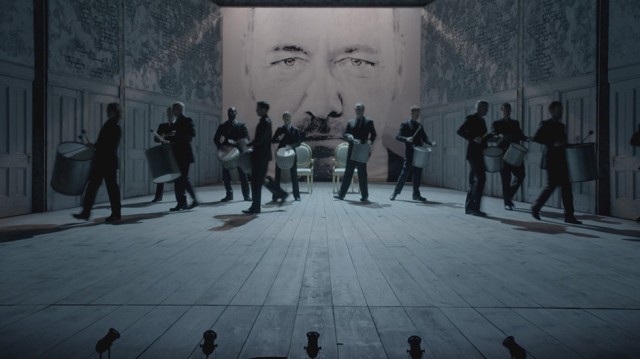
 Now: In the Wings on a World Stage, the marvelous new documentary that follows a transatlantic company as it performs Richard III around the globe, did not get its name only because it’s the first word of Shakespeare’s classic tragedy — “Now is the winter of our discontent” — nor simply because it takes place in modern times in modern dress with nods to modern technology, but also because it’s a spine-tingling celebration of the immediacy of live theater. In 2009, Sam Mendes’s Neal Street Productions, the Old Vic under the leadership of Kevin Spacey, and the Brooklyn Academy of Music, led by Joseph Melillo, formed a partnership in which British and American actors would present five classic plays over three years. Dubbed the Bridge Project, the wildly successful venture concluded in 2012 with Spacey, an American living and working in London, starring in
Now: In the Wings on a World Stage, the marvelous new documentary that follows a transatlantic company as it performs Richard III around the globe, did not get its name only because it’s the first word of Shakespeare’s classic tragedy — “Now is the winter of our discontent” — nor simply because it takes place in modern times in modern dress with nods to modern technology, but also because it’s a spine-tingling celebration of the immediacy of live theater. In 2009, Sam Mendes’s Neal Street Productions, the Old Vic under the leadership of Kevin Spacey, and the Brooklyn Academy of Music, led by Joseph Melillo, formed a partnership in which British and American actors would present five classic plays over three years. Dubbed the Bridge Project, the wildly successful venture concluded in 2012 with Spacey, an American living and working in London, starring in 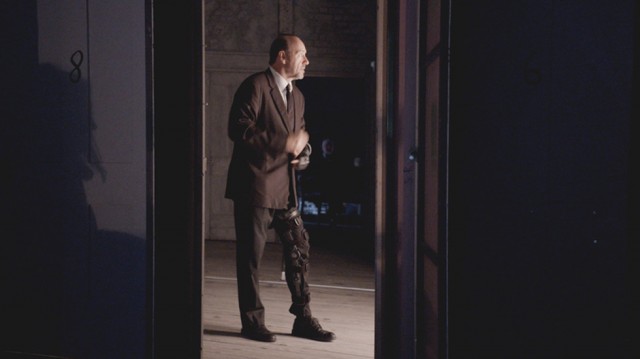
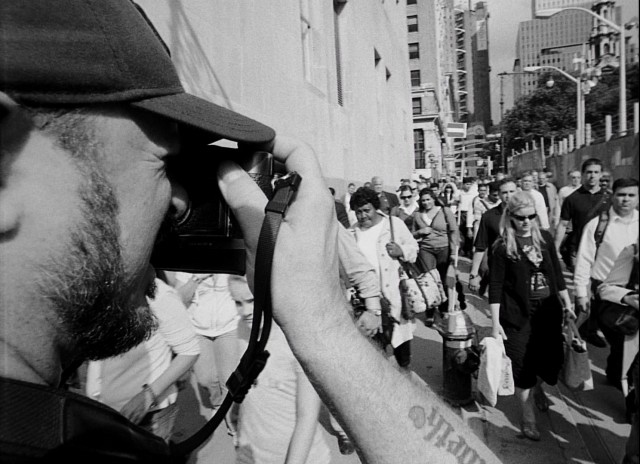
 “I need to be kind of weird to photograph people all the time without permission, because it’s very aggressive, and I have to do it,” street photographer Matt Weber says at the beginning of Dan Wechsler’s fun documentary More Than the Rainbow, adding, “And you have to be kind of a psycho.” Wechsler — a filmmaker and rare bookseller who, with George Koppelman, has just claimed to have discovered William Shakespeare’s annotated dictionary — follows Weber around New York, primarily in the subways and Coney Island, as the former taxi driver tries to capture the spirit of the city on film, looking for unique shots that can come and go in a flash. Wechsler speaks with such other photographers as Ralph Gibson, who waxes poetic about the art form, sometimes in French; Dave Beckerman, who gave up a successful business career to shoot on the streets; Philadelphia’s Zoe Strauss, whose “10 Years” exhibition was recently at ICP; Jeff Mermelstein, a street photographer who shoots mostly in color; critic and photographer Ben Lifson, who passed away last year; Cuban-born photographer Julio Mitchel; and, most curiously, San Francisco–based fetish photographer Erik Kroll, who doesn’t care for Weber’s work. Weber, who has been photographing the city since 1978, is also shown collaborating with Todd Oldham, who is designing a book on Weber’s subway series. All of the photographers discuss the relative merits of color versus black-and-white, whether they ask people for permission before taking their pictures, and the inherent differences between analog and digital. The film often strays too far from its main subject, Weber, losing sight of itself in its effort to cover too much in a mere eighty-three minutes, but it usually gets back on track, particularly with lovely 35mm interstitial trips through the city, in color and black-and-white, set to the music of Thelonius Monk and Keith Gurland, courtesy of John Rosenberg, who edited the film and music and shot the documentary with Arlene Muller. Especially in an age when everyone thinks he or she is a photographer, snapping photos with camera phones and posting them on social media sites, More Than a Rainbow shows how it’s really done. The film opens at the Quad on May 2, with Wechsler and Weber participating in Q&As following the 8:30 screenings on Friday and Saturday.
“I need to be kind of weird to photograph people all the time without permission, because it’s very aggressive, and I have to do it,” street photographer Matt Weber says at the beginning of Dan Wechsler’s fun documentary More Than the Rainbow, adding, “And you have to be kind of a psycho.” Wechsler — a filmmaker and rare bookseller who, with George Koppelman, has just claimed to have discovered William Shakespeare’s annotated dictionary — follows Weber around New York, primarily in the subways and Coney Island, as the former taxi driver tries to capture the spirit of the city on film, looking for unique shots that can come and go in a flash. Wechsler speaks with such other photographers as Ralph Gibson, who waxes poetic about the art form, sometimes in French; Dave Beckerman, who gave up a successful business career to shoot on the streets; Philadelphia’s Zoe Strauss, whose “10 Years” exhibition was recently at ICP; Jeff Mermelstein, a street photographer who shoots mostly in color; critic and photographer Ben Lifson, who passed away last year; Cuban-born photographer Julio Mitchel; and, most curiously, San Francisco–based fetish photographer Erik Kroll, who doesn’t care for Weber’s work. Weber, who has been photographing the city since 1978, is also shown collaborating with Todd Oldham, who is designing a book on Weber’s subway series. All of the photographers discuss the relative merits of color versus black-and-white, whether they ask people for permission before taking their pictures, and the inherent differences between analog and digital. The film often strays too far from its main subject, Weber, losing sight of itself in its effort to cover too much in a mere eighty-three minutes, but it usually gets back on track, particularly with lovely 35mm interstitial trips through the city, in color and black-and-white, set to the music of Thelonius Monk and Keith Gurland, courtesy of John Rosenberg, who edited the film and music and shot the documentary with Arlene Muller. Especially in an age when everyone thinks he or she is a photographer, snapping photos with camera phones and posting them on social media sites, More Than a Rainbow shows how it’s really done. The film opens at the Quad on May 2, with Wechsler and Weber participating in Q&As following the 8:30 screenings on Friday and Saturday.